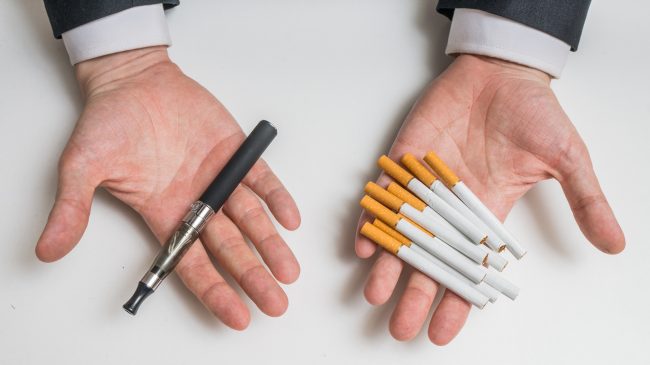Lack of combustion is key to the success of e-cigarettes as a tobacco harm reduction product. While addictive, nicotine is not responsible for smoking-related diseases, but the process of burning tobacco and inhaling the resulting smoke is.
Legal e-cigarettes containing nicotine are known to be 95 percent safer than combustible cigarettes and are the most popular tool used by Americans to quit smoking.
The latest research published in the New England Journal of Medicine (NEJM) shows e-cigarettes are almost twice as effective as nicotine replacement therapies (NRT) at helping smokers quit. The study builds on years of empirical research showing similar results.
Since e-cigarettes began gaining popularity in the U.S. from 2011, the adult smoking rate has declined at a considerably accelerated pace. After decades of consistent decline, the adult smoking rate leveled off between 2004 and 2010 at 20-to-21 percent. Between 2011 and 2017, however, the adult smoking rate fell from 19 percent to 14 percent. Youth smoking rates fell even more dramatically from 15.8 percent in 2011 to 8.1 percent in 2018.
How flavors help smokers switch to vaping
Surveys and academic research consistently show, contrary to popular belief, fruit, sweet, and dessert flavored e-cigarettes are the most popular choices among adult vapers. These flavors are now more often than not the first choice for smokers looking to make the switch to vaping. There is also a growing body of research suggesting not only are non-tobacco flavors the most popular options with adult vapers; they assist in smoking cessation.
A 2017 study by researchers at the Yale School of Public Health published in the National Bureau of Economic Research analyzing the impact of different tobacco flavor bans concluded: “According to our predictions, a ban on flavored e-cigarettes would drive smokers to combustible cigarettes, which have been found to be the more harmful way of getting nicotine.”
The authors concluded that banning e-cigarette flavors “reduces the appeal of e-cigarettes to those who are seeking to quit (smoking); e-cigarettes have proven useful as a cessation device for these individuals, and we find that quitters have a preference for flavored e-cigarettes.”
This judgment is shared by Michael Siegel, professor of Community Health Sciences at Boston University School of Public Health. “By creating barriers to a much healthier product, these laws will simply force former smokers to return to cigarette smoking,” writes Siegel. “Lawmakers are doing a huge favor not for the public’s health, but for Marlboro, which is going to see a windfall in the ex-smoker market as all of its competition from vaping products and most of its competition from the No. 2 brand (Newport) is eliminated.”
While it’s true that flavors can play a role in the decision of some youth to vape, the available research suggests it is one of many factors and often not the leading factor. Cigars, pipe tobacco, smokeless tobacco, and nicotine replacement therapies come in a variety of sweet flavors, yet their uptake among youth remains extremely low. In the United Kingdom, where vaping is encouraged as route out of smoking and there are thousands of flavors on the market but youth vaping is a fraction of that seen in the U.S. In 2019, 1.6 percent of British 11-18-year-olds used e-cigarettes more than once a week and more than three quarters of 11-18-year-olds have never tried or are unaware of e-cigarettes. The age of purchase for tobacco products in the U.K. is 18.
Since their entrance into the U.S. market, many have feared that e-cigarettes could act as a “gateway” to conventional tobacco smoking. Thankfully, this has proven not to be the case. Despite the worrying rise in youth vaping rates, cigarette smoking among minors has consistently declined every year since e-cigarettes began gaining popularity. The latest data from the National Survey on Drug Use and Health shows smoking among 11-17 year-olds declined to its lowest level on record at 2.7 percent in 2018.
Unintended consequences
A USA Today/Ipsos poll shows 59 percent of Americans agree a ban on vaping would drive consumers to the black market. A Wells Fargo survey of tobacco retailers shows more than 70 percent agree a ban on e-cigarette flavors would be a positive for combustible cigarettes. Prohibition can eliminate the legal supply of a product but it cannot eliminate demand. Banning a product used by millions of adult consumers could cause a relapse to smoking and spawn a black market for illicit flavored e-liquids. The production and sale of these liquids will not be regulated by the FDA and could harm consumers through contaminated and adulterated products.
The Public Health Case for E-Cigarette Flavors
Separating Fact and Fiction On Vaping, E-Cigarettes and Lung Illnesses (Oct. 2019)

